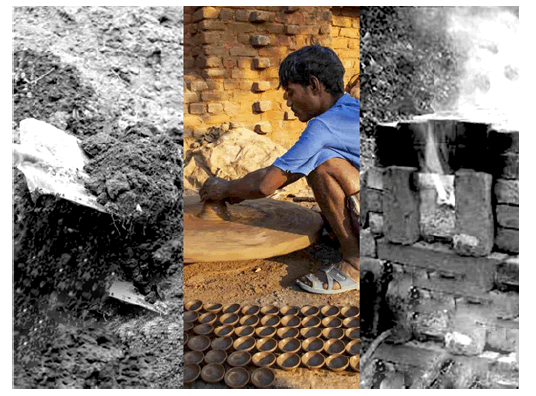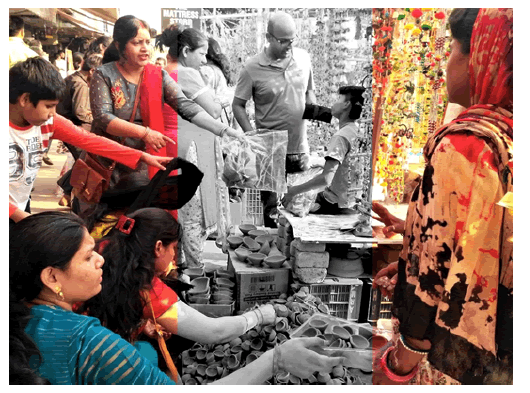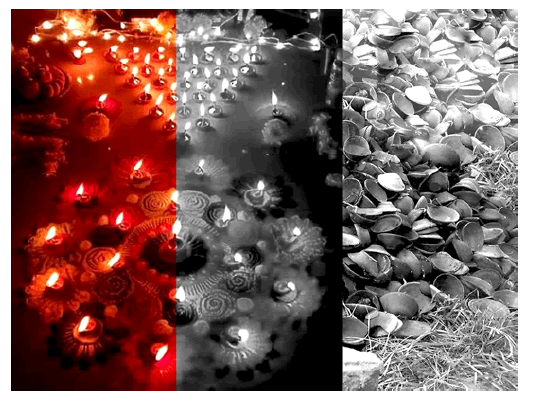The Life Cycle of Diya
Harshika Verma*
Department of Pollution Mangment, IGNOU Delhi-Indira Gandhi National Open University, India
- *Corresponding Author:
- Harshika Verma
Department of Pollution Mangment,
IGNOU Delhi-Indira Gandhi National Open University,
India,
Tel: 7985478705,
Email: harshikaverma33@gmail.com
Received: February 18, 2022, Manuscript No. IPWPC-22-11609; Editor assigned: February 21, 2022, PreQC No. IPWPC-22-11609 (PQ); Reviewed: March 07, 2022, QC No. IPWPC-22-11609; Revised: March 11, 2022, Manuscript No. IPWPC-22-11609 (R); Published: March 18, 2022, Invoice No. IPWPC-22-11609
Citation: Verma H (2022) The Life Cycle of Diya. J Water Pollut Contro Vol:4 No:1
Introduction
Diwali is one of the largest festivals celebrated by Indians around the world. Many people opine that earthen lamps are one of the best alternatives to save energy while celebrating peaceful and environment friendly Diwali. Besides, the little diyas symbolically mark the oblivion of obscurity and the beginning of the light that edifies all. However, diyas are born with both a positive and negative light that touch humans and the environment as well. Let’s explore the major impacts of different stages of diya’s life on us.

First, the phase of its beginnings, issue or not? Digging for the raw material, clay, may not have such hazardous impact but elevating water scarcity, salinity and land degradation causes a struggle in locating the appropriate clay resulting in more use of baleful materials that are cheaper and easily available.
Second, the stage of formation, skill development or environmental retrogression? Diya preparation on chaak is a traditional technique that needs to be taught to the budding generation as artistic skill development. Nevertheless, baking lamps in kilns or furnaces generate tonnes of harmful emissions, thereby increasing the carbon footprint.

Third, the time of marketing, revenue generation or childhood destruction? Marketing of diya provides opportunity to those who have skills but do not have appropriate platform to earn for their stress free survival. Nonetheless, it involves use of child labor that should be avoided. For instance, underprivileged families send their children to work in order to earn more in the festive season and even some people forcefully hire young children because they can emotionally persuade customers to buy their lamps and, failing that, face torture.

Fourth, the bout of celebration, is it just ebullience or fuel diminution? Lighting diya brings happiness to people and reduces wastage of electricity.It is also harmless to people and animals. Yet in many places, the issue of fuel shortage arises and using inappropriate fuel may cause more pollution and pose serious health hazards
Last, lamps, once used are a forgotten affair and their liquidation as millions of earthen lamps are discarded right after the festival which is a kind of detonation without crackers. According to the environmentalists, although diyas are made of clay, they pose a threat to the environment if discarded in the open as they take years to degrade naturally. Traditionally, artisans use plain clay to make diyas on chaak and use geru, a red-ochre color that comes from soil rich in iron oxides, for finishing. However, the market now is overflowing with diyas made of inorganic materials and synthetic colors which take several months to dissolve in water and may be nonbiodegradable as well. These effects are the causes of difficulties encountered in phase one and the cycle keeps repeating.
This tranquil way of celebration may even lead to several difficulties like reduced soil fertility, child labor, fuel inadequacy, water pollution and many more to resolve. Be that as it may, solutions exist to all the problems, this Diwali one must ponder on the problems resulting from its celebration and think of plausible solutions to alleviate the pain associated with these challenges.
Open Access Journals
- Aquaculture & Veterinary Science
- Chemistry & Chemical Sciences
- Clinical Sciences
- Engineering
- General Science
- Genetics & Molecular Biology
- Health Care & Nursing
- Immunology & Microbiology
- Materials Science
- Mathematics & Physics
- Medical Sciences
- Neurology & Psychiatry
- Oncology & Cancer Science
- Pharmaceutical Sciences
